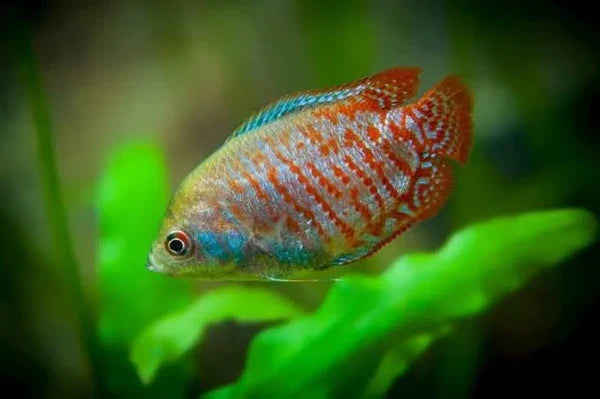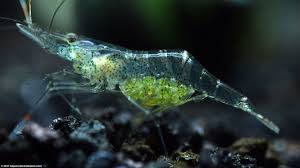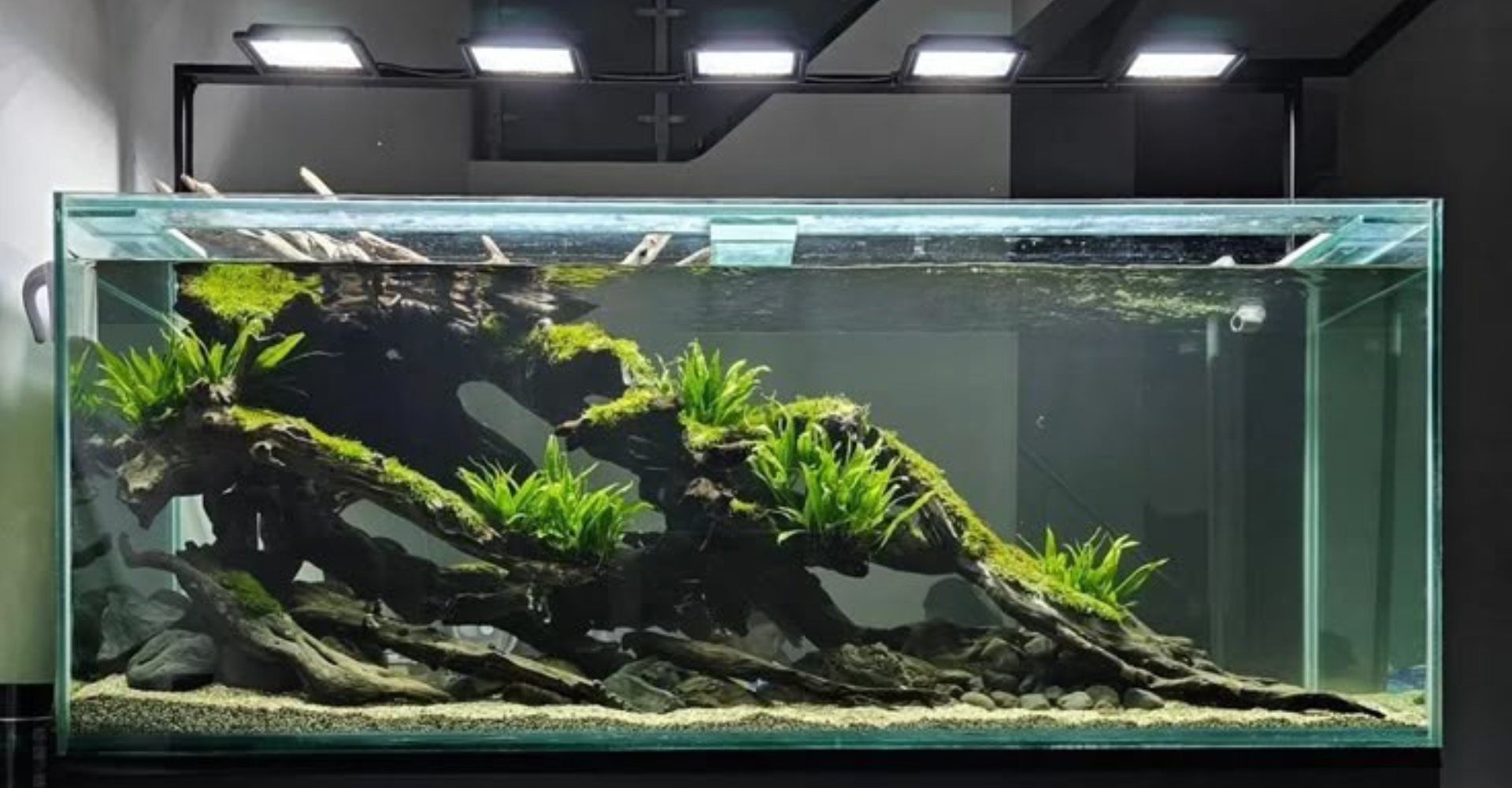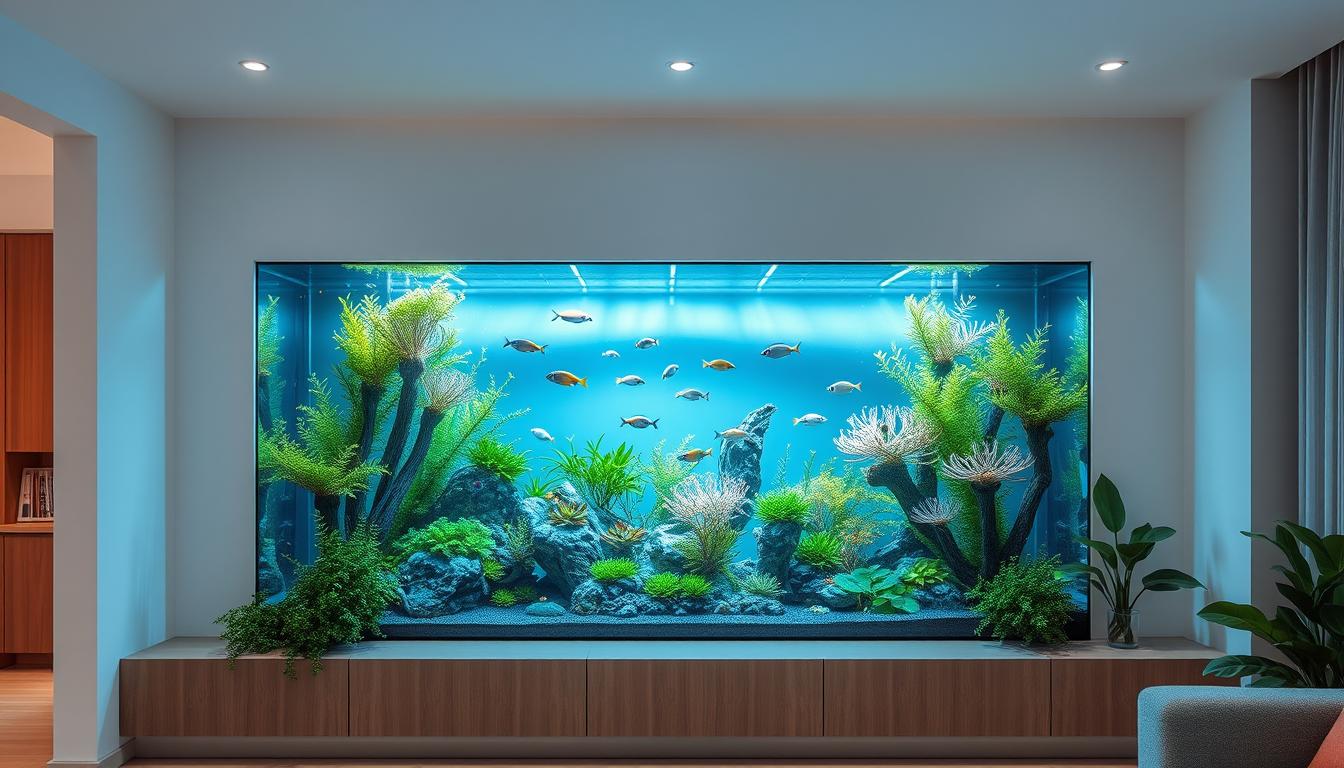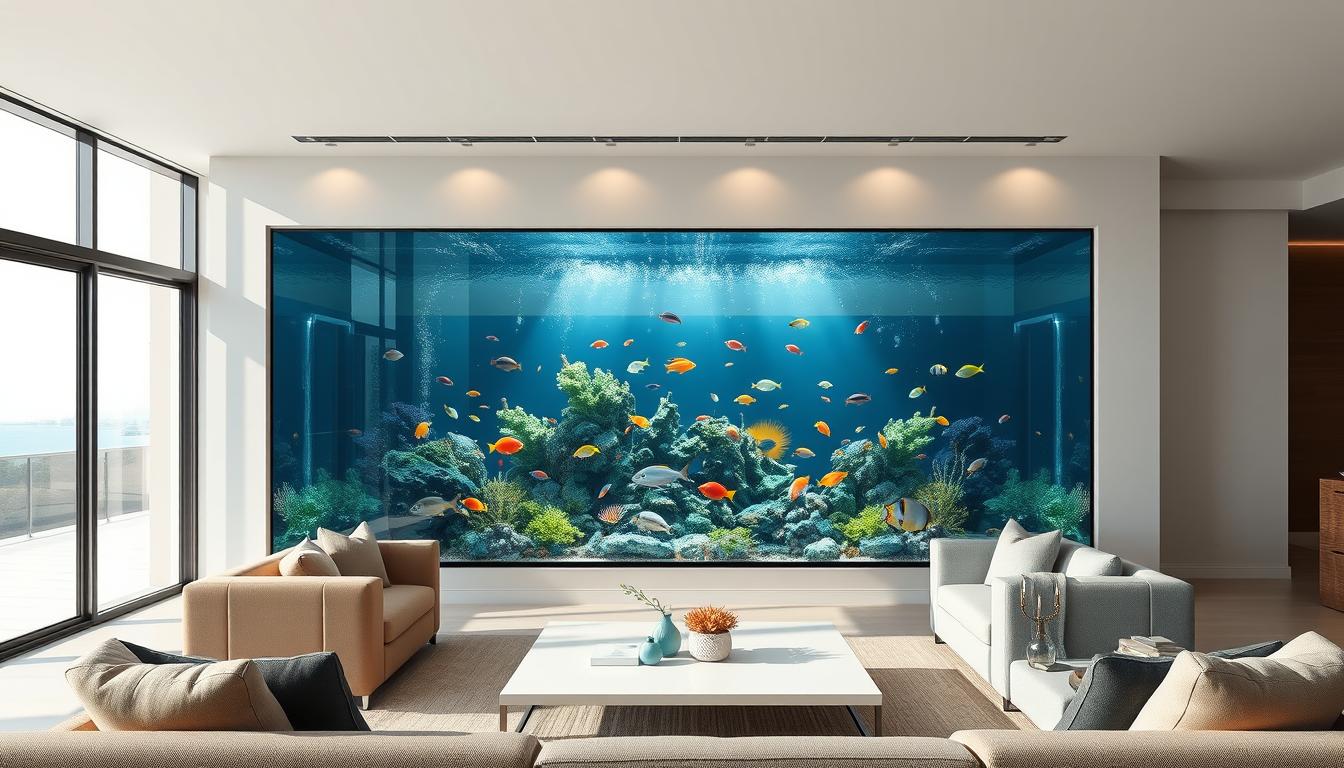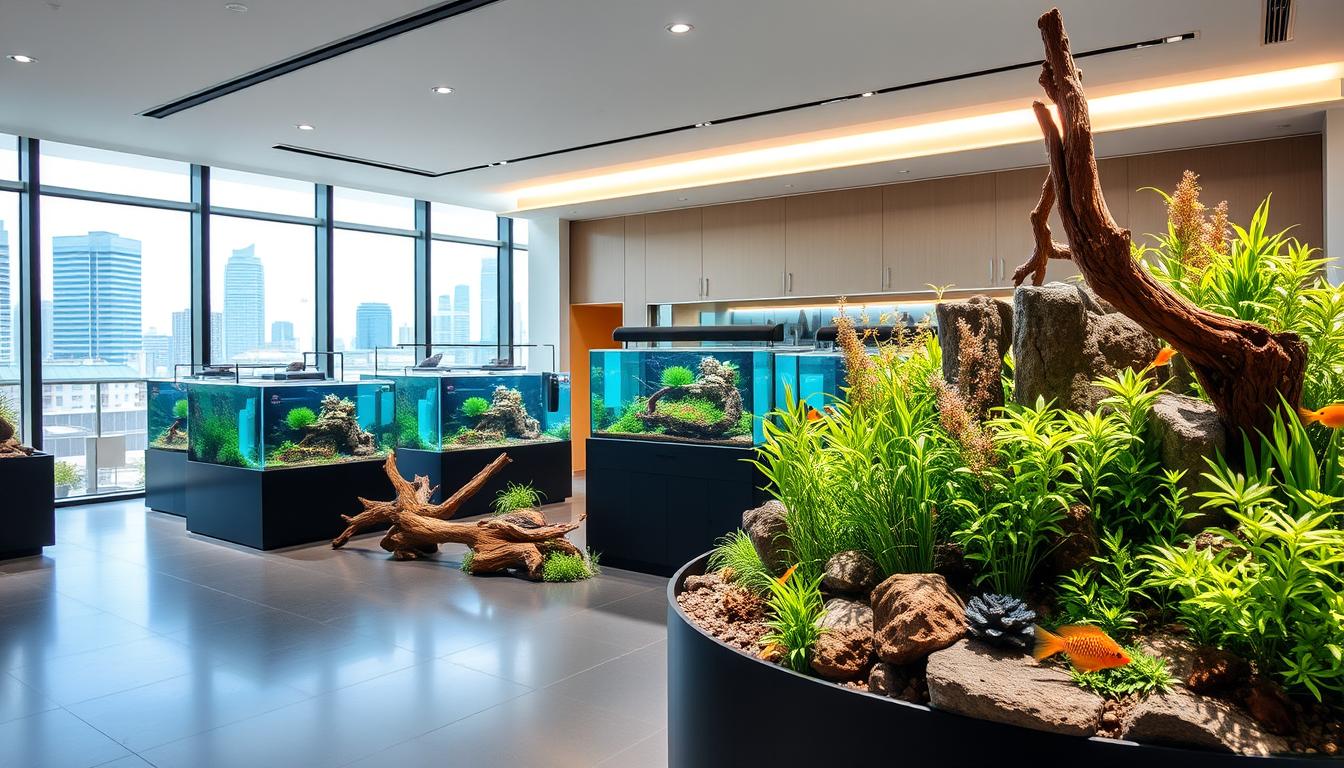Care Guide for Endler’s Livebearers -
Living, Housing, Tank Setup, Food, and Breeding

High Dorsal Mini Tiger King Endler
Endler's Livebearers, the scientific name is Poecilia Wingei. They are a great individual that adds vibrancy to any tank. Endler's livebearers is a freshwater fish with an eye-catching appearance. They are easy to care for and are a popular choice for aquarists, whether you're a beginner or an expert in the field.
This fish is found in Laguna de Patos, Venezuela. Its purebred breed is quite difficult to find. What you can find at most stores are hybrids. This fish can breed with guppies (Poecilia Reticulata).
The care requirements for both purebreds and hybrids are similar. It may differ only in hardiness and lifetime, as more inbreeding can lead to weaker lines.
Java Fern X Java Moss: The Special Bundle
Natural living environment
Its natural habitat is hot, hard water with high GH content. They are also surrounded by trees that are rich in vegetation and algae.
It is vital to take note of these natural conditions and keep them in your tank. Even if you can't imitate perfectly. In their place, stem and floating plants will suffice.
The name of Endler's Livebearer
Endler's Livebearer is the perfect choice if you are looking for a relatively rare but easy-to-care-for freshwater fish. They are scientifically known as Poecilia Wingei; these fish are so beautiful that aquarists have developed a classification system to determine their genetic purity!
Endler's Livebearers are part of Poecilia, the same genus as molluscs and guppies. From a genetic point of view, this fish resembles the common guppies. However, it has been given its scientific name for conservation purposes. They are found in Laguna de Patos in Venezuela. This species is very easy to breed. It thrives in captivity and is constantly breeding.
Red Cherry Shrimp X Java Moss: The Special Bundle
Appearance

In addition to observing their colouration, you can tell a male Endler's Livebearer from a female by looking at the gonads. It is long and thin in males, while in females, it is triangular.
Endler's Livebearer cannot be confused with other species because of the bright colours of these fish. They look similar to guppies in shape and size. You may even see them labelled as Endler's guppies.
If you want to add a splash of colour to your tank, Endlers Livebearers will not disappoint! The males emit bright colours, including red, orange, purple, yellow, yellow, blue, and green. Some have transparent fins with brightly coloured streaks.
Females, on the other hand, look a lot like guppies. They have shades of yellow-grey with a translucent caudal peduncle. Their tails are slightly coloured. Although females are not considered as attractive as males, their colours stand out in any tank.
BUY Endler Guppy - Assorted Male
How to distinguish male and female?

In addition to observing their colouration, you can tell a male Endler's Livebearer from a female by looking at the gonads. It is long and thin in males, while in females, it is triangular. Juvenile males often develop gonopodium before their colouration.
Another notable difference is a dark spot near the anal opening, which is common in females. In terms of the body, they are slightly larger and broader than males.
Distinguishing purebred levels.
You will often see Poecilia Wingei divided into different classes. These fish quickly breed with standard guppies, so the taxonomy is intended to give you more detailed information on the genetics of this fish.
"N-Class" fish are those that come from Laguna de Patos. They come from the original strain in Venezuela. This is the purest variety of this fish, as they have not undergone any crossbreeding.
"P Class" Fish: Endler's LiveBearer is classified as Class P if records and documents are unavailable or of unknown origin. It may appear pure in all respects but cannot be assumed if no description exists. Most "pure" fish kept by hobbyists fall into this category.
Finally, the "K Class" fish. These are fishes born by crossbreeding between fish species. The result is often lined with wonderfully vibrant colours. Over the years, several hybrid strains have been developed. The most popular include Tiger Endlers, Paradise Endlers and Yellow Jacket Endlers.
Note to you: Males have slender bodies and colourful tails. On the other hand, females are quieter; they are usually silver or brown and have smaller tails.
Lifespan
The average lifespan of Endler's Livebearer is two to three years. In many cases, females will live shorter than males. This is because the body is constantly reproducing.
Of course, there must be a way to know how long an Endler's Livebearer will live. It depends on many factors (including genetics and the quality of care you provide) affecting their lifespan.
How long the Endler Livebearer will live depends on whether it is a purebred or a hybrid. As mentioned above, inbreeding sometimes produces less healthy fish with poor longevity.
How you care for the fish and the living conditions also determines its lifespan. The average lifespan of purebred Endler breeds is about 2-3 years when well cared for.
Males tend to live longer than females. That's because reproduction can be hard and exhausting for the female's body. The fish spawns every month, which can take a toll on its tiny body. In many cases, the offspring usually die shortly after birth.
Medium size.
A fully mature male Endler's Livebearer is slender and measures about 1 inch (2.5 cm). Females have rounded bellies and can grow up to 1.8 inches (4.5 cm) long. The female can grow even longer, sometimes exceeding 2 inches (5.08 cm).
Caring for Endler's Livebearer.

Blue Neon Endler
You don't need to be an experienced aquarist to care for Endler's Livebearer. Like their guppies cousins, these freshwater fish are some of the easiest to care for! They are perfect for beginners as well as seasoned aquarists.
Endler's livebearers are some of the easiest fish to care for, making them ideal for beginners and experienced players. They are also easy to breed and produce healthy and easy-to-care-for fry schools. However, there are some basic principles that you must master for your fish to grow healthy.
Tank size.
Let's start with the easiest part: Tanks! Given their small size, Endler's Livebearer only needs a 20-gallon tank to grow. The 20-gallon tank is suitable for a group of four or five fish.
If you want to keep more numbers, increase the tank size accordingly. Generally, add about four or five gallons of volume per fish.
Note: Several articles state that Endler's Livebearers can be kept in 5-gallon tanks. This is untrue and will ultimately lead to a poor quality of life for the Endler fish community.
Red Cherry Shrimp X Darwin Shrimp: The Special Bundle
Water parameters.
Like any other freshwater fish, the key to keeping Endlers healthy is to recreate their natural environment. This applies to decoration, and water conditions need to be suitable.
Endler prefers hard water and a relatively high pH. They can tolerate various temperatures, but moderate temperatures are best for them.
Here are some general water parameters that you need to keep in mind:
Water temperature: 64°F to 84°F
pH: 5.5 to 8.0 - neutral water medium.
Water hardness: 10 to 30 KH
Regarding lighting, what works for the plants in your tank will also work for this species. However, you must turn it off at night so the fish can perceive the time of day and relax.
Tank setup.
A well-decorated tank is a must for this fish! The environments in which they live naturally are rich in vegetation and algae. You don't have to add algae to your tank, but live plants are essential.
You will need some more aquatic plants. These provide a place for biofilms to grow. They also provide shelter and help remove ammonia from the water. Good botanical choices include Java fern, narcissus, duckweed, Cabomba, horn grass, hygrophila polysperma, wisteria, and more!
Aquatic plants act as a source of food and shelter for Endler. As they breed, the plants also provide a haven for the fry.
Aquatic plants act as a source of food and shelter for Endler. As they breed, the plants also provide a haven for the fry. Add a variety of floating plants and stems to the tank. You can also add some floor coverings and plants in the foreground to keep things interesting!
The bottom of the tank uses a soft substrate. Endlers' livebearers will spend most of their time in the middle and top of the water column. Still, they are occasionally curious about the substrate to burrow. Choose smooth gravel or sand so they can move quickly.
The filtration system can be weak enough as these fish produce little waste. However, the water flow should be circulated to keep ammonia and nitrate levels low to protect the fish. The standard hang-on-back filter works fine. The output of this filter provides a nice stream of water, which is a great benefit.
Make sure you cover the straw or use a sponge. Because the fry can easily get sucked into the filter system! Remember to cover the tank as well, as these guys are surprisingly agile and can jump out of the tank when you forget to close the lid!
Food and diet.

Endler's Livebearer is an omnivore with a cute little mouth. They feed on algae, plants and small insects in the wild. The recommended diet includes live and frozen bloodworms, brine, shrimp, blackworms, and daphnia. These should be supplemented with spinach, blanched and peeled peas, and small blanched zucchini. Also, plant some grass for guppies in the tank, as fish like to graze on the algae that grow on these plants.
You can also feed them pellets or freshwater fish flakes like Spirulia flake. When feeding them flakes, break them up to make them easier to eat.
You'll find that Endler's Livebearer isn't picky, as they'll happily eat just about anything—even if you provide the same food every day! But that doesn't mean you should ignore balancing their diet. A varied, high-quality diet helps them achieve their best colour and produce healthy and long-lived fry.
Since they are very active, you should feed them 2-3 times daily. However, be careful not to overfeed them. The more food they eat, the more waste they produce, and you will have to work hard to change the water!!!
Endler's survivors are omnivores. They will eat anything they can get their hands on!
Under culture conditions, it is best to provide a standard diet of dry flakes or pellets. Look for a balanced product that is formulated to improve colour.
You can offer fresh, frozen or freeze-dried food. These fish have healthy cravings for protein-rich foods like bloodworms, daphnia, brine shrimp, and blackworms.
Note: Most Endlers will eat aquatic plants and algae in the tank between feedings. But you can also include some plant-based foods in their diet. Blanched peas and zucchini are this fish's favourite.
Behaviour & Personality.
Energetic and curious, Endler's Livebearer is a species you'll never find sad! These fish are constantly exploring the tank.
You can see them creeping through trees, inspecting the substrate, or playing with each other. For the most part, Endler's Livebearer is not aggressive.
A group rarely has a violent dispute, but you may see some large fish biting the smaller ones to compete for offspring. Ideally, keep at least three females for each male. The bigger the group, the better! More females will distract the male, and the female will be relaxed from being repeatedly asked to mate by the male.
Common diseases.
Some of the disease problems you may encounter are Ich, parasites, and fin rot.
Ich is a parasitic infection that often attacks fish when they feel stressed. You will likely encounter this disease if the tank's water parameters must be corrected. It could be the wrong temperature range or too much ammonia.
Whatever the case may be, you need to solve it quickly! The disease can spread throughout the community and destroy your fish if you don't show up immediately. Fortunately, simple medications can solve the problem right away.
Parasites like tapeworms and worms are also familiar with this species. Quarantine any newly acquired fish to ensure that parasite problems do not spread.
Fin rot is often the product of a bacterial infection or physical trauma. It is popular with fish with long fins like Endler's Livebearer. To treat this condition, isolate your Poecilia Wingei and use over-the-counter medications to stop the spread of bacteria.
Endler's Livebearer Tankmate  If you are looking for suitable tank mates for your Endler's Livebearer, here are some excellent species to try
If you are looking for suitable tank mates for your Endler's Livebearer, here are some excellent species to try
Many compatibility options exist to keep Endler's Livebearer in the community pool. However, you have to plan everything carefully.
It would be best if you never kept these fish with aggressive species. They are too small to defend themselves against hungry or agitated fish. Try to keep them with fish that are similar in size and also docile for peaceful coexistence.
Note: Many aquarists prefer to keep Endler's Livebearer in one tank. Even if they keep them in a community tank, most owners will remove the guppies from the tank to keep the Endler purebred and free from chaotic crossbreeding.
Guppies and Endler's live fish will spawn together. Poecilia Wingei is rare, so many aquarists want to keep the genetics as pure as possible! Nothing inherently wrong with that, but it would mess up the younger generation's genetics.
If you are looking for suitable tank mates for your Endler's Livebearer, here are some excellent species to try: Neon Tetra, Glassfish, Bolivian Cichlid Ram, Cloudy White, Danio Zebra, Catfish Cory, ear canal, honey gourd, betta fish.

Try to keep them with fish that are similar in size and also docile for peaceful coexistence.
Breeding.
If you have experience with guppies, you know well what to expect from Endler's livebearers. They will spawn on their own; not only that, they spawn continuously! In most cases, you don't need to do anything to promote fertility.
This is why it is essential to keep more females than males. With a larger pool of females to breed, the females have time to recover between spawns.
After spawning, the female takes only about 23 days to give birth. She can give birth to up to 30 fries at a time. Once out of the womb, the fry will immediately sink to the bottom of the tank. They will stay there for a while, eating the yolk sac to give birth on their own in 2-3 days.
Meanwhile, separating the mother would help because these fish will eat the young. Aquatic plants with many plants will increase the survival rate of the fry. But if you want all the fry to live, you must move the adults to a separate tank.
You can feed the fry immediately with powdered food. In a week or two, you can switch to brine shrimp. They have been free-swimming since birth, so that they will accept powdered foods with no problem.
This species matures quickly. It only takes about two months to grow. Males will acquire their characteristic colouration when they are about 4 to 5 weeks old.
Conclusion
Endler's livebearers are great freshwater fish to own, and we recommend keeping them. There is much to enjoy between their beautiful colours, energetic personalities, and strong natures.
If you want beautiful fish to adorn your tank, Endler is a perfect choice. Their looks are excellent! They are easy to care for and breed. Therefore, whether you are a novice or an experienced player, setting up a separate tank for them is a great way to have leisure and relaxation time.
Micro Aquatic Shop - Spark a passion for your aquarium.


